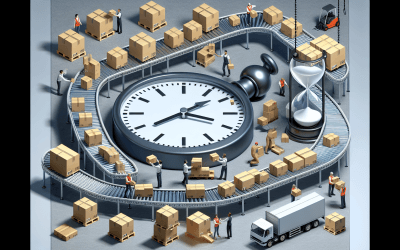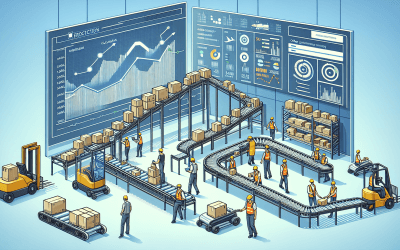In today's fast-paced world of warehousing and logistics, managing material flow efficiently is...
Streamline warehouse movement with expert material flow evaluation.
Material Flow Evaluation
People – Equipment – Workflow

Material flow evaluation is a service designed to assess how materials move through your facility—reducing delays, improving efficiency, and eliminating bottlenecks. This service is ideal for warehouse managers, process engineers, and operations leaders looking to improve flow from receiving to shipping.
By examining physical layout, worker motion, and equipment use, we help you optimize your process and reduce unnecessary handling. Areas we typically assess include:
- Inbound receiving and putaway processes
- Product staging, picking, and packing flow
- Forklift and conveyor routing paths
- Workstation layout and material handling
- Shipping and outbound logistics zones
This evaluation improves throughput and builds a foundation for scalable, lean operations.
Warehouse Material Flow Optimization for Smoother Operations
Remove Bottlenecks
Improve Flow Efficiency
Build for Scalability
Learn More From Our Blog
The Impact of Material Flow on Order Cycle Times
When it comes to optimizing warehouse operations, one crucial aspect that often gets overlooked is...
How to Use Simulation Software to Improve Material Flow
Do you want to optimize the material flow in your warehouse and improve productivity? Look no...
The Impact of Material Flow on Order Accuracy
Efficient material flow is essential for maintaining accurate order fulfillment in any warehouse...
How to Design a Material Flow Strategy for E-Commerce
When it comes to running a successful e-commerce business, optimizing your warehouse operations is...
How to Optimize Material Flow in Shared Warehouses
Warehouse operations can be complex and challenging, especially when it comes to efficiently...
Why Choose HCO Innovations for Material Flow Evaluation?
At HCO Innovations, we bring a practical, data-backed approach to material flow evaluation. Our team doesn’t just look at diagrams—we walk the floor, observe your operations, and develop real-world strategies that fit your unique facility layout. We focus on helping your people, products, and equipment move better, faster, and smarter.
- In-depth analysis of workflows from receiving to shipping
- Hands-on evaluation of equipment usage and motion paths
- Tailored layout and process improvement recommendations
- Focus on eliminating delays and increasing throughput
- Support for lean initiatives and operational scaling
If you’re looking to increase productivity without a full facility redesign, our material flow evaluations are a smart first step.








